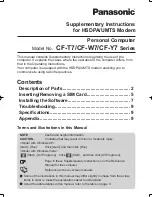
July 2021
34
Point-to-Multipoint
(P2MP)
One device can access several devices via the same link (aka. Broadcast link, Multidrop Link)
Multipoint-to-Point
A device may have multiple P2P links, but each link only connects to one device.
Duplex
Full Duplex – in a P2P Link, both parties and send and receive at the same time.
Half Duplex –Elements in the communications network can only receive or send at one time, but not both.
Half Duplex protocol therefore requires that there is a network monitor to control data transmission. This
can take the form of a central hub, as in a Star network, or Master/Slave (Server/Client, Host/Peripheral)
P2P. In these cases the Master/Server/Host device is responsible for providing a period during which the
Slave/Client/Peripheral can utilize the link. Usually the Master/Server/Host sends data/queries and the
Slave/Client/Peripheral responds if necessary.
Packet Protocol
A packet protocol is a communications method in which data is packaged into packets, which are defined
as having a header and a payload. The Internet Protocol is an example of a packet protocol. The concept is
this: regardless of the physical medium, the recipient can decipher the incoming packet due to the packet
header’s fixed structure. The packet’s header informs the recipient if the data is meant for them, or another
entity on the network. The header also informs the recipient of the packet’s final destination, the size of the
packet, and validation data (CRC).
Another feature of packet protocols is that if data is in packet format, it can be repackaged into another
packet protocol without the protocol needing to know what data the packet contains. This is why the
packet is broken into header and payload. The header is always a fixed size or contains a size element at
a fixed location, such that the payload is assumed to begin at: Header(Start) + Header(size).

































